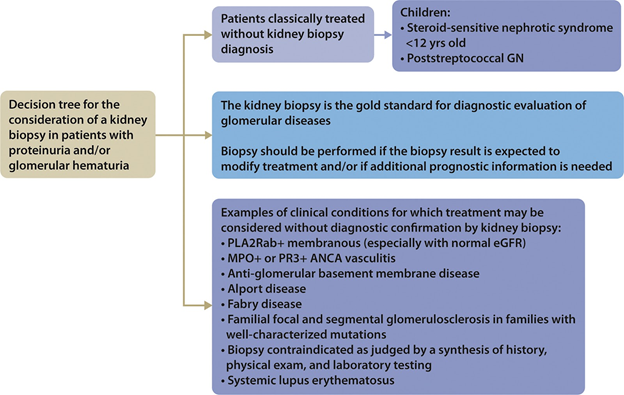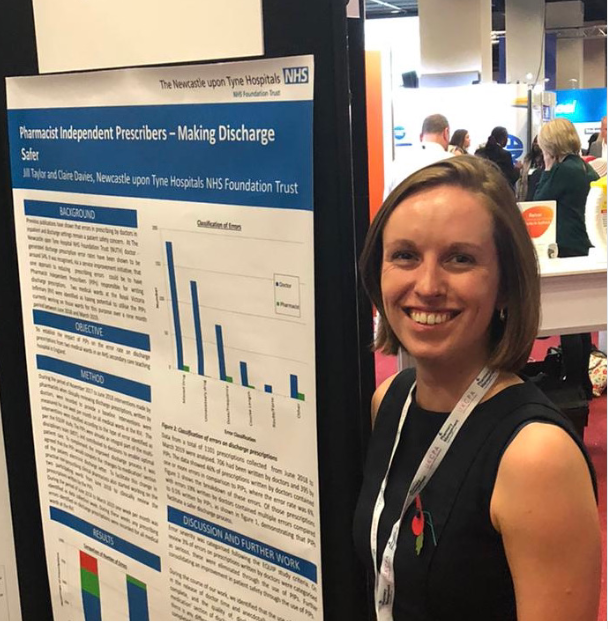Be sure to join us TOMORROW here on @ckd_ce for our first ORIGINAL accredited content . . . from none other than @edgarvlermamd . . . whom you #kidney-oriented clinicians will know as a comforting and familiar presence and as an AWESOME teacher. He'll be talking about ...
...IgA nephropathy (#IgAN) from the ... perspective of the 2021 @goKDIGO #guidelines. Lots to learn about this common cause of #CKD worldwide! Free CE/#CME for #physicians #nurses #PAsDoThat #nursepractitioner @ANNAnurses @neph_PAs @pharmacists @nephondemand @IgAN_JBarratt
FOLLOW US NOW so you don't miss a tweet! @NephUCommunity @NephRodby #nephtwitter @ASNKidney @cheekaycheung @dr_denby @geddescc
@Kidney_Research @UChicagoMed @Renaltubules @kidneypathology @SWadhwaniMD @BradRovin @ssfarouk @arvindcanchi @jopelina @Errantnephron @glomcon
@Kidney_Research @UChicagoMed @Renaltubules @kidneypathology @SWadhwaniMD @BradRovin @ssfarouk @arvindcanchi @jopelina @Errantnephron @glomcon
1) Welcome! This #tweetorial will highlight some recommendations & practice points for the management of glomerular diseases that have been recently published by @goKDIGO
Executive Summary pubmed.ncbi.nlm.nih.gov/34556300/
Full Guideline pubmed.ncbi.nlm.nih.gov/34556256/
I am @edgarvlermamd
Executive Summary pubmed.ncbi.nlm.nih.gov/34556300/
Full Guideline pubmed.ncbi.nlm.nih.gov/34556256/
I am @edgarvlermamd

2) This #tweetorial is accredited for 0.5h CE/#CME #MedEd #FOAMed and is supported by an educational grant from Travere Pharmaceuticals. This program is intended for healthcare providers. Faculty disclosures are listed at ckd-ce.com/disclosures/.
3) IgA nephropathy (#IgAN) is the most common pattern of primary glomerular disease worldwide & remains a leading cause of CKD & kidney failure. Genome-Wide Association Studies (GWAS) indicate a differing worldwide risk for IgAN.
4) In populations of White descent, #IgAN is more common in M than F by a ratio of 3:1; ratio approaches 1:1 in most Asian populations
pubmed.ncbi.nlm.nih.gov/34556256/
pubmed.ncbi.nlm.nih.gov/34556256/

5) Although patients may present at any age, the peak incidence is in the 2nd and 3rd decade of life. The wide range of clinical presentations of IgAN varies in frequency with age. No clinical pattern is pathognomonic of IgAN
renalfellow.org/2009/02/10/man…
archive.kidneynews.org/kidney-news/pr…

renalfellow.org/2009/02/10/man…
archive.kidneynews.org/kidney-news/pr…


6) First described over 5 decades ago by Jean Berger, it continues to be not only a diagnostic, but treatment dilemma
pubmed.ncbi.nlm.nih.gov/21705126/
pubmed.ncbi.nlm.nih.gov/21705126/

7) Central to the pathophysiology of #IgAN is the systemically ⬇️ glycosylation of O-linked glycans in the hinge region of the IgA1 molecule, leading to dysregulation & elevated serum levels of galactose-deficient IgA1 (Gd-IgA1)
pubmed.ncbi.nlm.nih.gov/30665568/
pubmed.ncbi.nlm.nih.gov/22318424/

pubmed.ncbi.nlm.nih.gov/30665568/
pubmed.ncbi.nlm.nih.gov/22318424/


8) These aberrant IgA1 molecules are then deposited w/in the kidney mesangium leading to immune complex formation, promotion of cell growth, & production of proinflammatory cytokines, chemokines, & growth factors.
11) The pathognomonic finding is the presence of globular deposits of IgA accompanied by weaker staining for C3, IgG, and IgM in the mesangium on immunofluorescence microscopy.
pubmed.ncbi.nlm.nih.gov/26498419/

pubmed.ncbi.nlm.nih.gov/26498419/


12) On light microsocopy, findings can be variable and include mesangial cell proliferation, mesangial expansion, focal or diffuse proliferative GN, crescentic GN, chronic sclerosing GN, MPGN 1 pattern, and endo- and extra- capillary hypercellularity
pubmed.ncbi.nlm.nih.gov/26498419/
pubmed.ncbi.nlm.nih.gov/26498419/

13) EM confirms the presence of electron-dense deposits in the mesangium but may also occur in subendothelial and subepithelial spaces
pubmed.ncbi.nlm.nih.gov/26498419/
pubmed.ncbi.nlm.nih.gov/26498419/

15) The kidney biopsy is scored using the revised Oxford MEST-C Classification
pubmed.ncbi.nlm.nih.gov/34556256/

pubmed.ncbi.nlm.nih.gov/34556256/


16) The Oxford MEST-C classification MEST-C score was developed to predict kidney outcome and not to guide treatment or to predict treatment response
qxmd.com/calculate/calc…
qxmd.com/calculate/calc…

17) Let's see how this works. 48 year old, black ♂️, with an eGFR of 50ml/min/1.73m2 at the time of biopsy.
BP 140/90, 24-hour Urine Protein 2000 mgs/day
Medications: Lisinopril 40 daily, Chlorthalidone 25 daily
Kidney Biopsy: IgA nephropathy (M1, E1, S0, T1).
BP 140/90, 24-hour Urine Protein 2000 mgs/day
Medications: Lisinopril 40 daily, Chlorthalidone 25 daily
Kidney Biopsy: IgA nephropathy (M1, E1, S0, T1).
18) You want to know the risk of progression of kidney disease at 6 months from the time of the kidney biopsy.
pubmed.ncbi.nlm.nih.gov/28529339/
So plug the data from tweet 17 into the formula in tweet 16 and check back tomorrow for your answer!

pubmed.ncbi.nlm.nih.gov/28529339/
So plug the data from tweet 17 into the formula in tweet 16 and check back tomorrow for your answer!


19) Welcome back! You are learning about #IgAN and earning CE/#CME on your ONLY source of accredited #tweetorials in #CKD. I am @edgarlerma and I thank you for joining us. Please FOLLOW this new feed!
20) How’d you do? You should have come up with “The risk of a 50% decline in estimated GFR or progression to end-stage renal disease 0.5 years after renal biopsy is 0.52%.” 

21) Two full prediction models were shown to be accurate and validated methods for predicting disease progression and patient risk stratification in IgAN in multi-ethnic cohorts
#VisualAbstract by @divyaa24
pubmed.ncbi.nlm.nih.gov/30980653/
#VisualAbstract by @divyaa24
pubmed.ncbi.nlm.nih.gov/30980653/

22) The International IgAN Prediction Tool is a valuable resource to quantify risk of progression & inform shared decision-making w/ patients.
It incorp's clinical info at the time of biopsy & cannot be used to determine the likely impact of any particular treatment regimen
It incorp's clinical info at the time of biopsy & cannot be used to determine the likely impact of any particular treatment regimen
23) There is insufficient evidence to support the use of the Oxford Classification MEST-C score in determining whether immunosuppression should be commenced in IgAN.
24) There is insufficient evidence to support the use of the Oxford Classification MEST-C score in determining when any glucocorticoid therapy should be commenced 

25) Which biomarkers have been validated for IgAN?
A. Serum Gd-IgA1 levels
B. Serum anti-glycan antibody
C. Serum levels of IgA-1 containing circulating immune complexes
D. Others
mdpi.com/1422-0067/21/1…
A. Serum Gd-IgA1 levels
B. Serum anti-glycan antibody
C. Serum levels of IgA-1 containing circulating immune complexes
D. Others
mdpi.com/1422-0067/21/1…
26) That was a trick question. There are no validated diagnostic serum or biomarkers for IgAN
pubmed.ncbi.nlm.nih.gov/34556256/
ncbi.nlm.nih.gov/pmc/articles/P…
pubmed.ncbi.nlm.nih.gov/34556256/
ncbi.nlm.nih.gov/pmc/articles/P…

27) High risk of progression in IgAN is currently defined as proteinuria >0.75–1 g/d despite ≥90 days of optimized supportive care 

28) In the @goKDIGO 2021 guidelines, mgt of IgAN focuses on non-immunosuppressive strategies (supportive care) to slow progression of the disease:
- Rigorous BP control
- Optimal inhibition of RAAS
- Lifestyle mods (weight⬇️, exercise, smoking cessation, & dietary Na restriction)
- Rigorous BP control
- Optimal inhibition of RAAS
- Lifestyle mods (weight⬇️, exercise, smoking cessation, & dietary Na restriction)

29) Return tomorrow for a bit more education including a look at various aspects of #IgAN management, plus a link to your FREE CE/#CME credit! #FOAMed #nephtwitter @MedTweetorials #nephrology
• • •
Missing some Tweet in this thread? You can try to
force a refresh




















